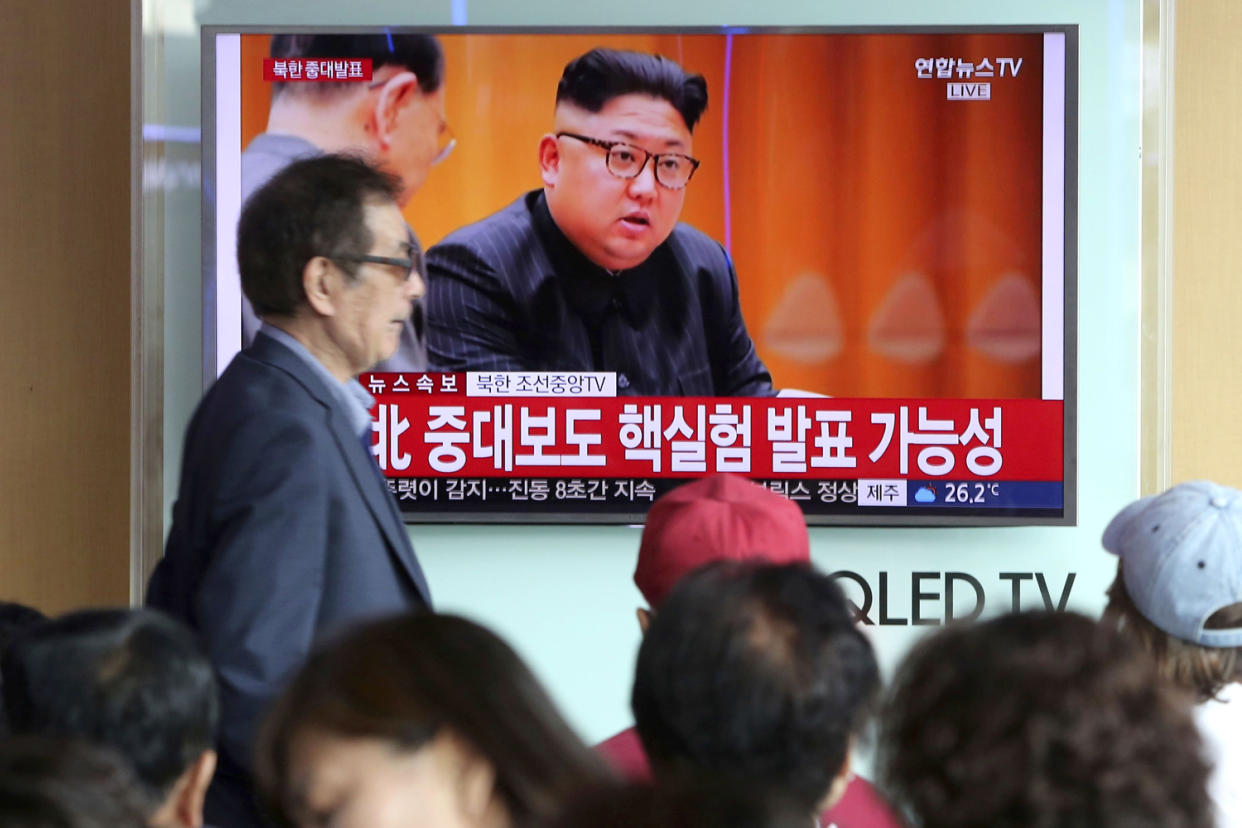North Korea nuclear test: Is Pyongyang telling the truth about its military capabilities?

North Korea claims to have tested a hydrogen bomb at the weekend, which can be loaded on to an intercontinental ballistic missile, as it accused its enemies of being “hell-bent on escalating confrontation”.
Theresa May said Pyongyang’s nuclear tests, which resulted in a 6.3 magnitude earthquake, pose an “unacceptable further threat to the international community”, as the United Nations called an emergency Security Council meeting to discuss the issue.
This is the country’s sixth nuclear test, but the first time Kim Jong-un has claimed to have tested a thermonuclear warhead, also known as a hydrogen bomb.
Previously, the country has tested atomic bombs — similar to those dropped on Japan in 1945 by the US — but hydrogen bombs can be 1,000 times more powerful.
Dr Patricia Lewis, research director of international security at Chatham House, explains that regime is claiming to have tested a two-stage weapon.
She described the bombs as “more sophisticated” that those dropped on Nagasaki and Hiroshima, which were fissions bombs that used uranium and plutonium.
Hydrogen bombs use fission as a first stage, then focus the energy into the second stage, which uses fusion material.
Dr Lewis says that fusion material allows a much greater explosion and, as it is very light, “can go much further, which is significant when you’re trying to reach across the ocean.”
“It’s a technically a big step up,” she told Yahoo News.
“It’s a technology that is beyond the basics.”
“It’s still old technology — you’re talking 1950s, rather than 1940s technology — but for a small state like North Korea, to be able to do in it in a fairly short period of time, it’s faster than people expected.”

The official North Korean statement claims that “the DPRK successfully carried out a test of H-bomb for ICBM in the northern nuclear test ground of the DPRK at on September 3.”
It said: “The explosive power of which is adjustable from tens kiloton to hundreds kiloton, is a multi-functional thermonuclear nuke with great destructive power which can be detonated even at high altitudes for super-powerful EMP attack according to strategic goals.”
However, Dr Lewis said only time will tell if Pyongyang is telling the truth about the extent of its nuclear capabilities.
She said it is possible that North Korea tested a fission-boosted bomb, which falls short of a hydrogen bomb.
“We don’t know it’s true of course. [Finding out] all depends on whether or not you can track the radioactive debris, which is released into the air. The particles are picked up by monitors, which the US, China and Japan, South Korea all have,” she said.
“These are signature pieces of debris, which they will immediately recognise as coming from a nuclear weapons explosion.”
Dr Lewis said that Comprehensive Nuclear-Test-Ban Treaty (CTBT) in Vienna is the place to watch for confirmation of the test.
“It has an international monitoring system across the whole world. It’s trusted by a wide range of people — it’s not US or Russia intelligence agencies. It’s international,” she said.
“It means when they come out with a statement, it’s much more believable.”
“Such a device could evaporate the entire city of New York completely – no one would stay alive,” Andrei Lankov, a professor of Korean studies at Kookmin University in Seoul, told Al Jazeera.
“With an atomic bomb, you can kill half of Manhattan, at most.”

 Yahoo News
Yahoo News 

